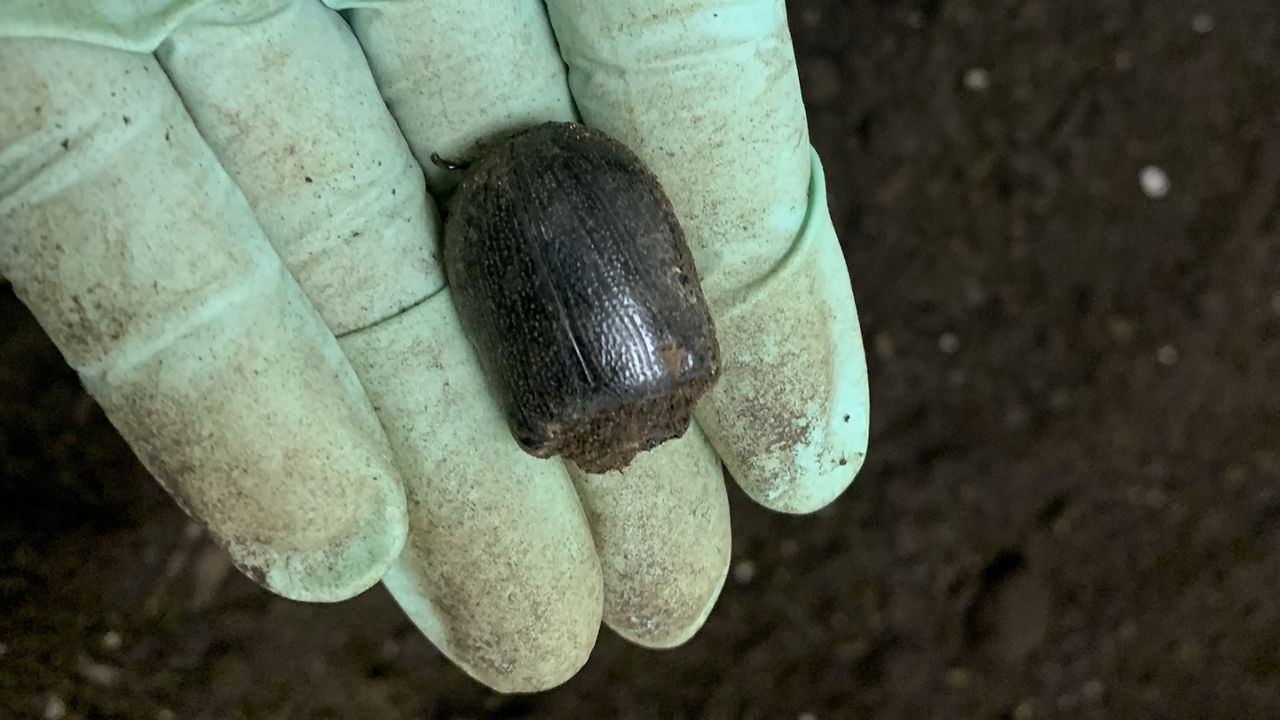The invasive coconut rhinoceros beetle has been discovered on Maui, according to a news release from the Hawaii Department of Agriculture.
Hawaii Department of Agriculture staff found a dead coconut rhinoceros beetle (Oryctes rhinoceros) on Monday among compost bags at a big box store on Maui during a routine inspection. HDOA staff noticed a compost bag had a hole in it. Inside the bag, they discovered the dead coconut rhinoceros beetle. The store voluntarily quarantined 15 pallets of the bagged compost, which will be shipped back to Oahu, where they originated.
After the coconut rhinoceros beetle was discovered, HDOA inspectors on Maui and Hawaii Island went to other retailers selling the same compost bags. Pallets of the compost bag were also quarantined and will be shipped back to Oahu. HDOA staff are also checking with stores on Kauai to see if the bags of compost are sold anywhere on the island.
HDOA did not provide specific details about who manufactured the compost bag or where it was sold. However, people who recently purchased a locally made compost from a big-box retailer on Maui may return the product to the store or drop it off at Maui’s HDOA Plant Quarantine Branch. If the product is not in a returnable state, the bag of compost can be double-bagged and sealed in a dark-colored, heavy-duty plastic bag and placed on concrete or asphalt in a spot that gets direct sunlight for five consecutive days.
Coconut rhinoceros beetles often breed on green waste. HDOA urges residents to check their compost bins and green waste for larvae. In order to stop the spread of the beetles, HDOA is issuing a rule restricting the movement of green waste and similar material from Oahu to neighbor islands. This rule was originally issued in July 2022.
The coconut rhinoceros beetle was first detected on Oahu in Dec. 2013 at Joint Base Pearl Harbor-Hickam and is now widespread. On Kauai, the beetle was first detected earlier this year in May. To date, nine adult beetles and four larvae have been discovered on Kauai.
The highly destructive species bore into the crowns of palm trees to feed on sap. About 10 to 50% of trees attacked by coconut rhinoceros beetles die because the beetle damages the growing point of a palm or the wounds created by the beetle make the tree vulnerable to insects or pathogens. After a palm tree’s trunk rots, the tree may fall unexpectedly.
The beetle is a pest in many Pacific Islands, including Palau, Fiji, Wallis, Nukunonu, American and Western Samoa and Guam. In the Republic of Palau, the first beetle was discovered in 1942, and the coconut palm has been completely wiped out on some islands, according to DLNR’s Hawaii Invasive Species Council.
Michelle Broder Van Dyke covers the Hawaiian Islands for Spectrum News Hawaii. Email her at michelle.brodervandyke@charter.com.








